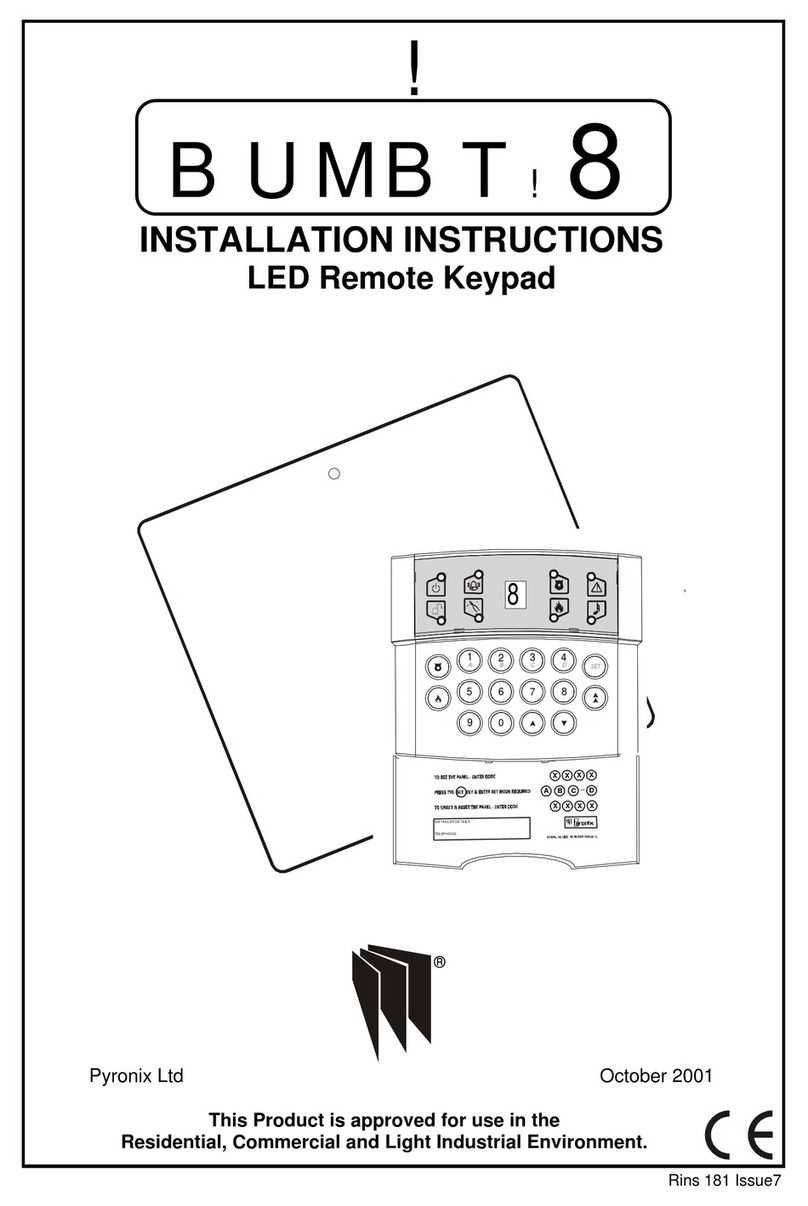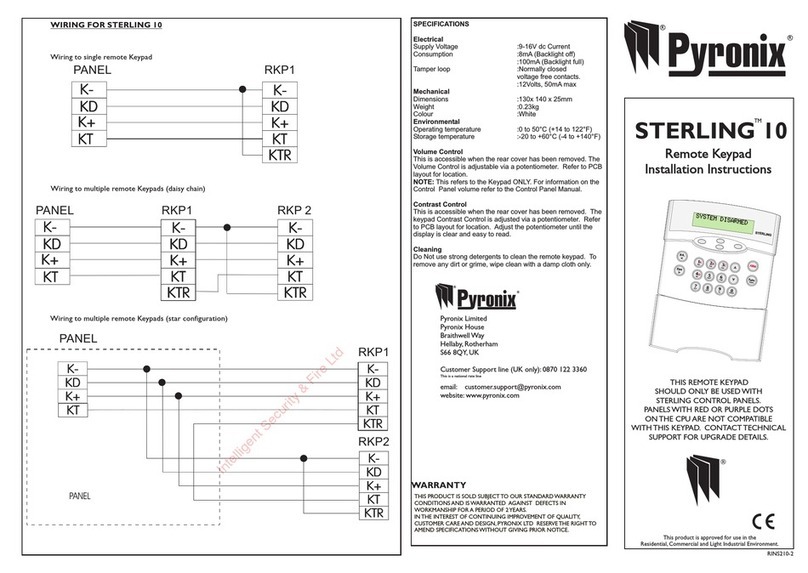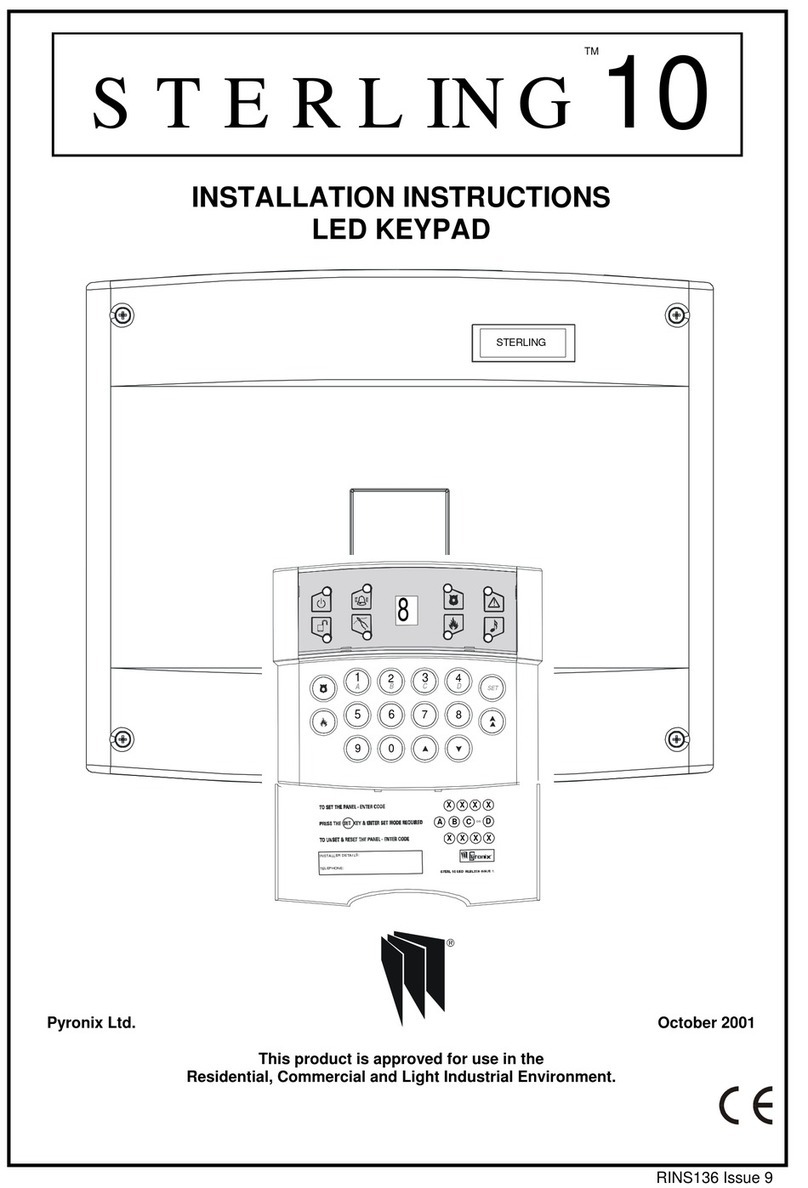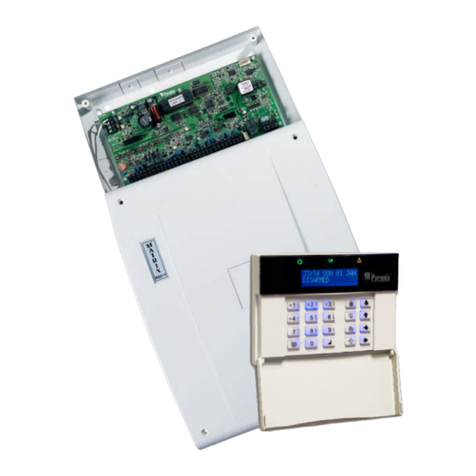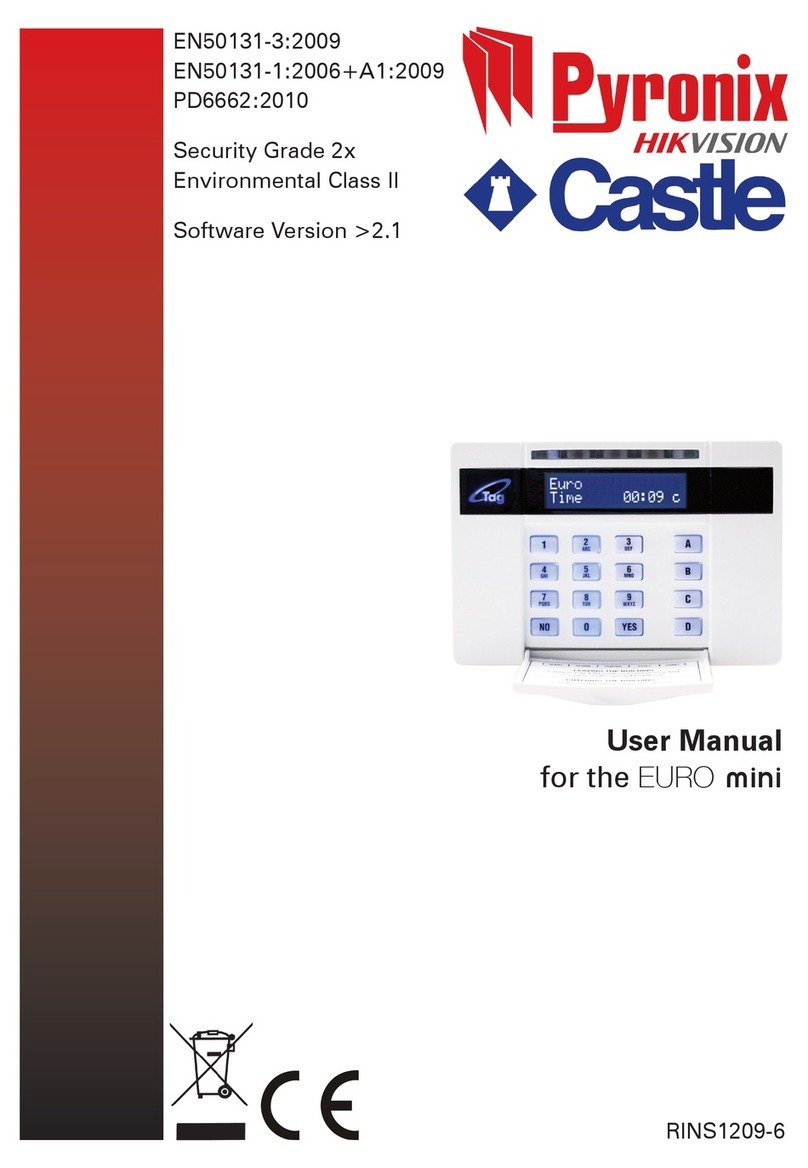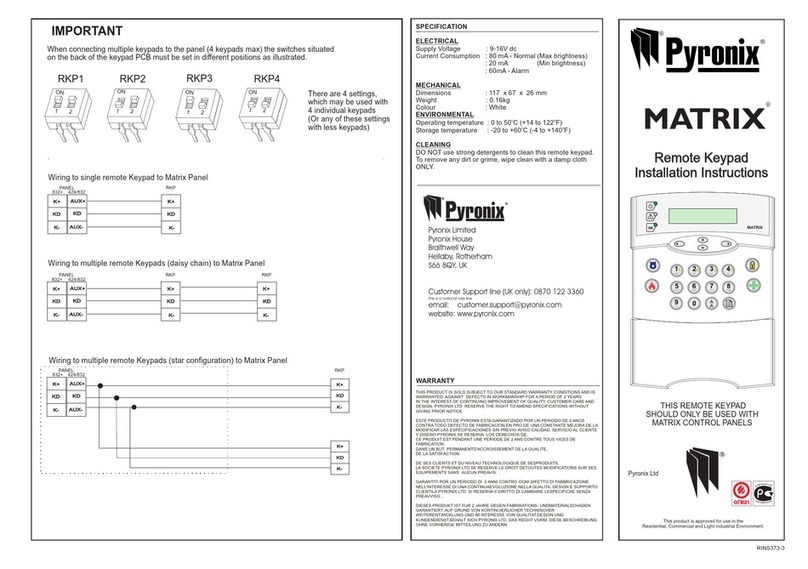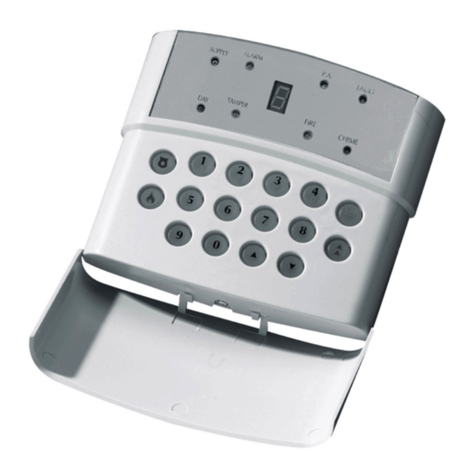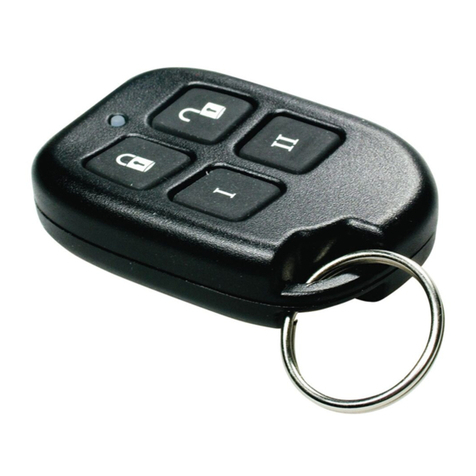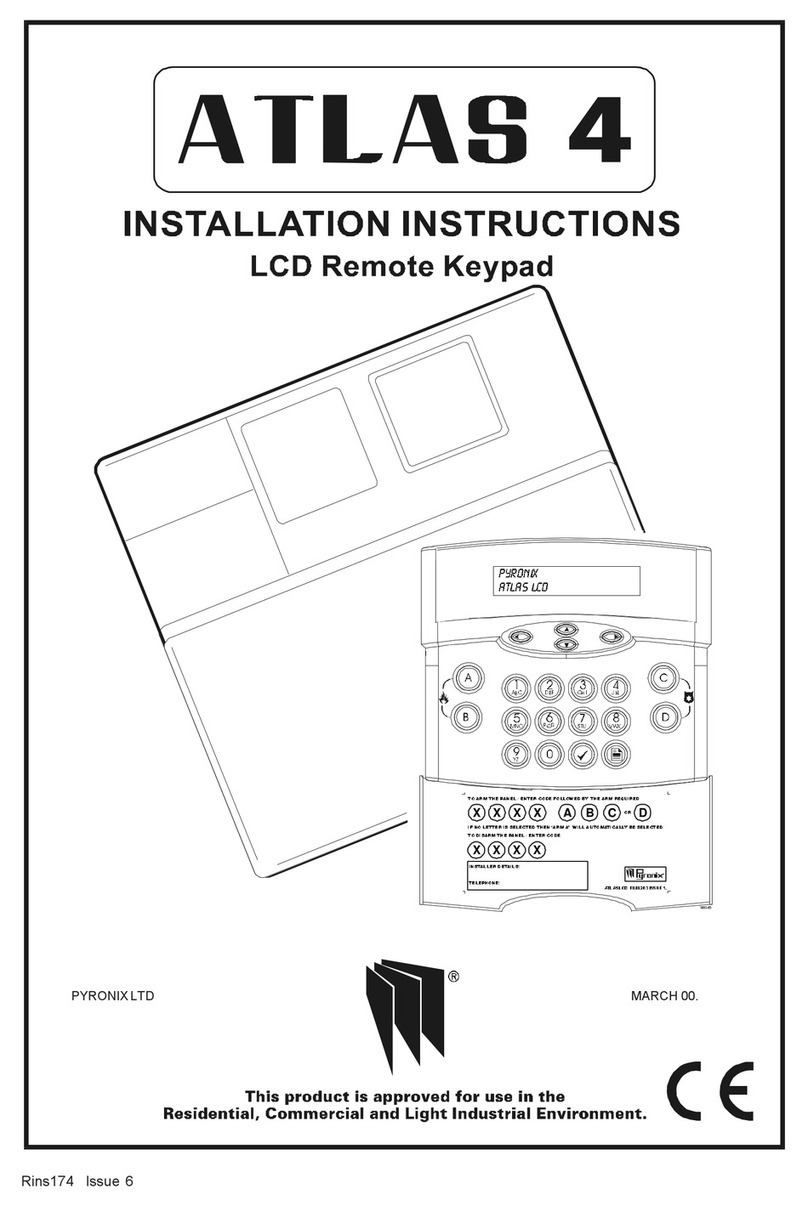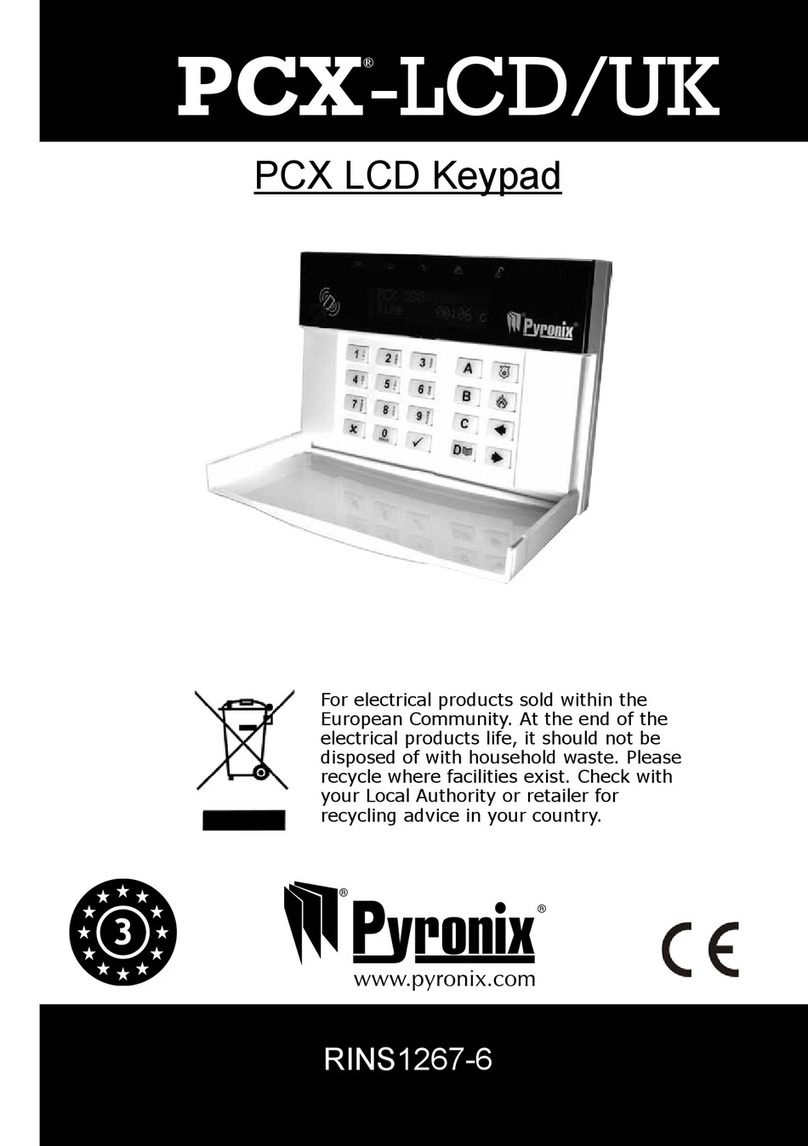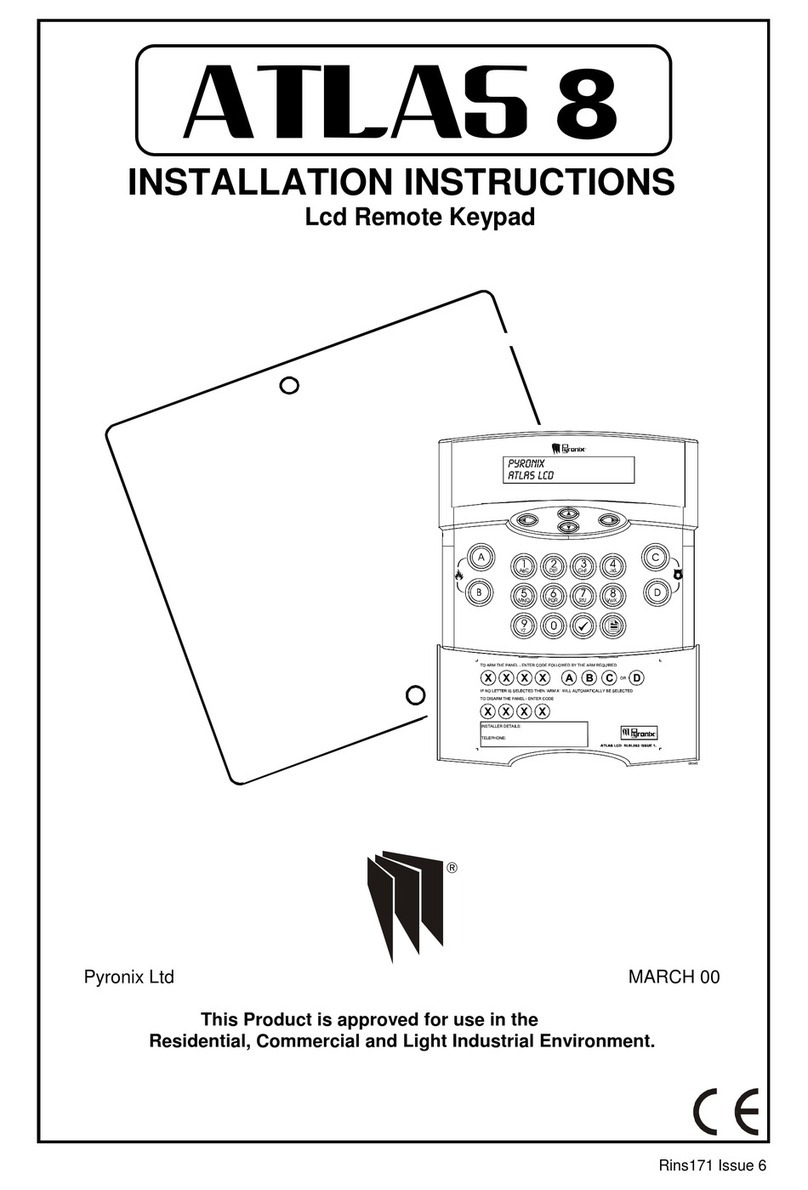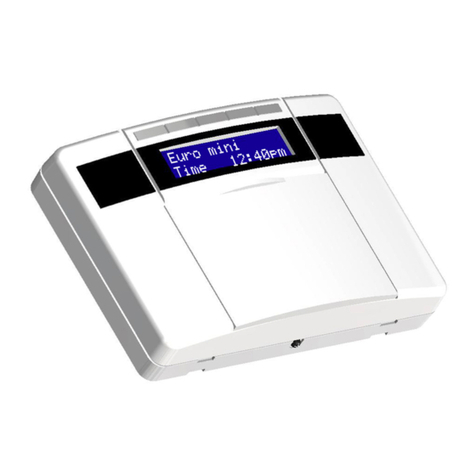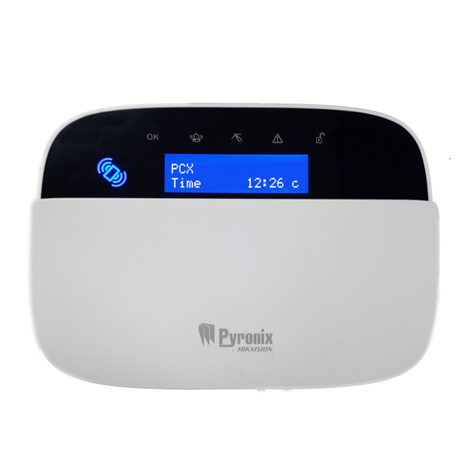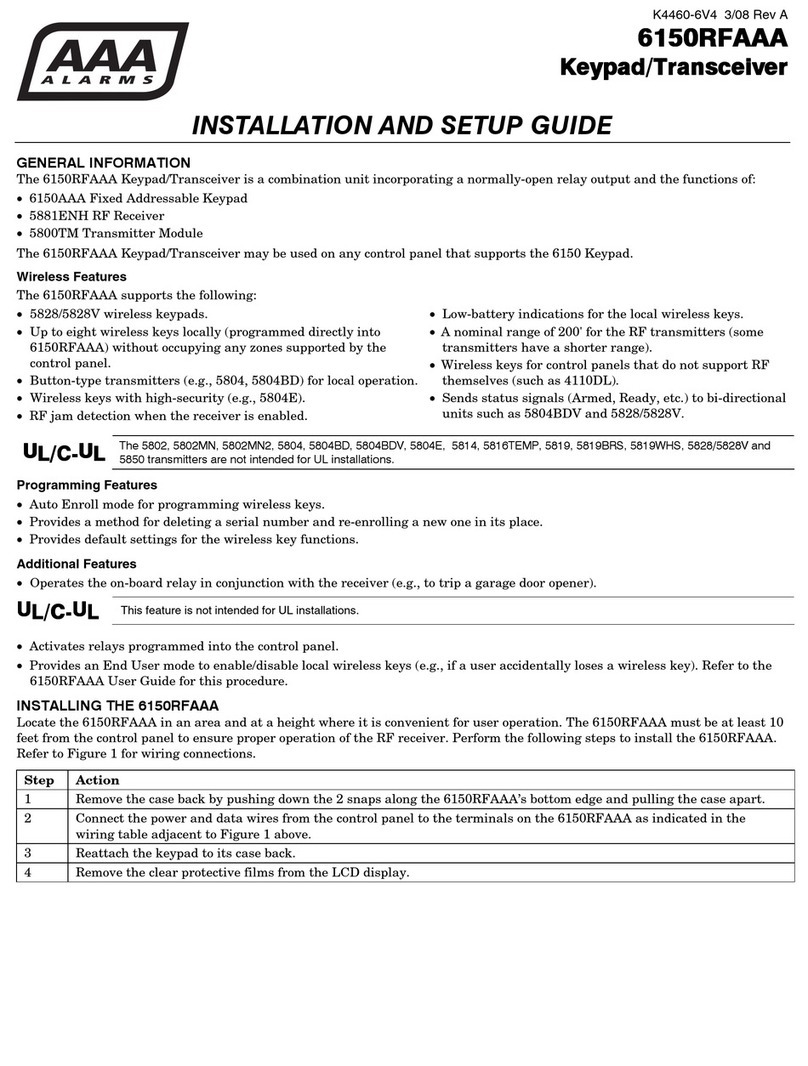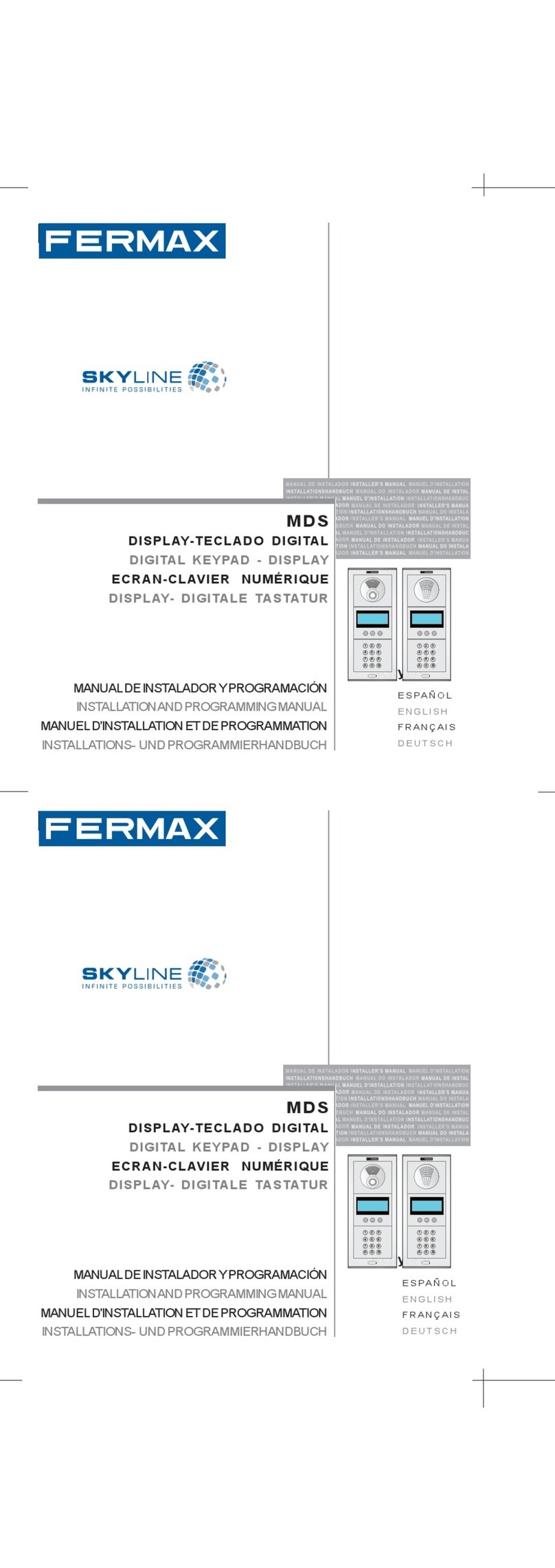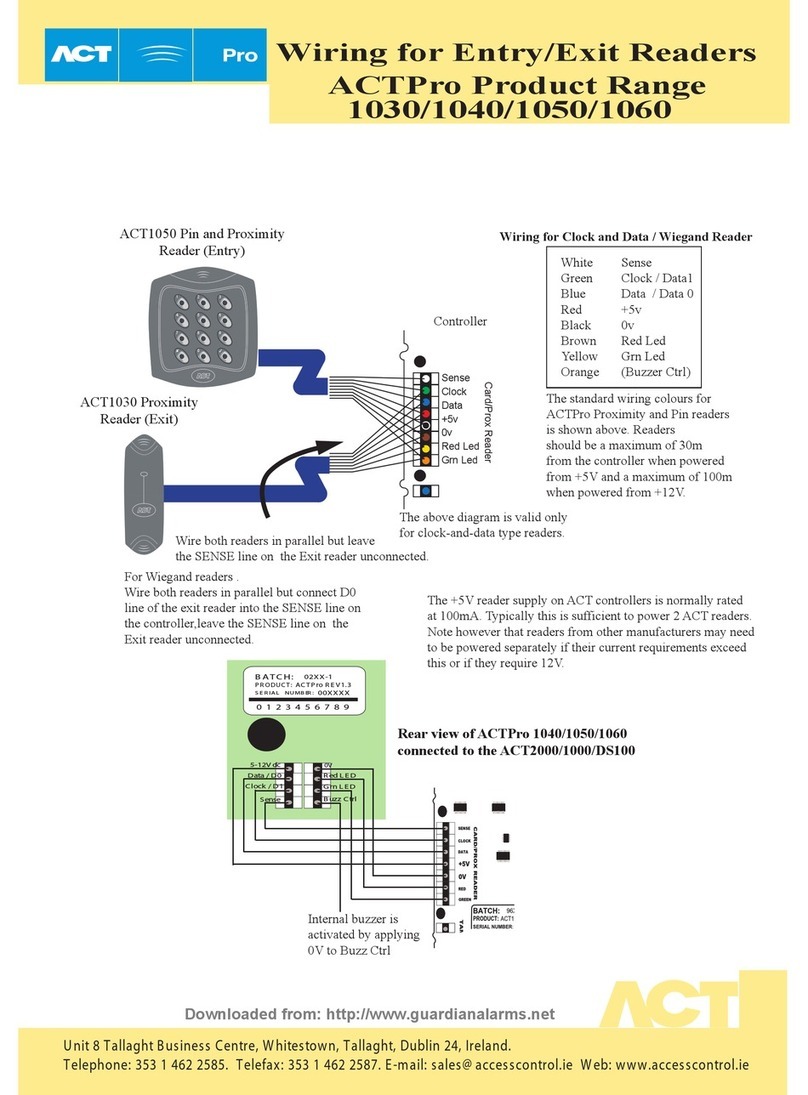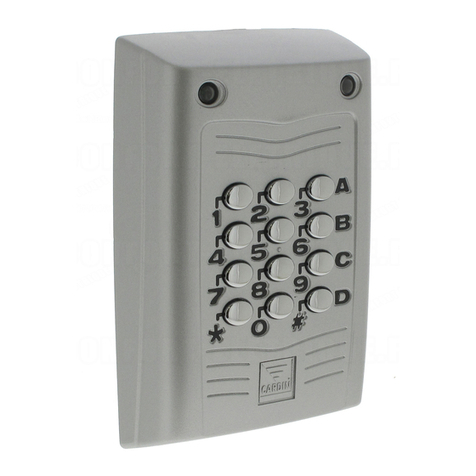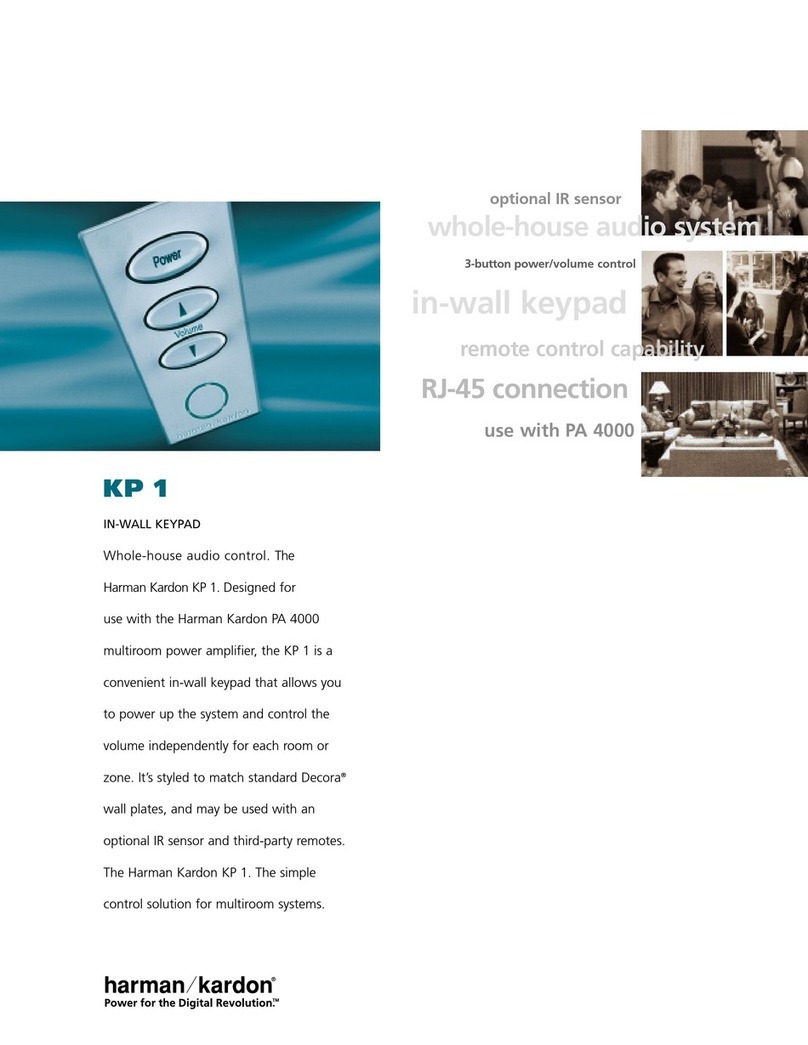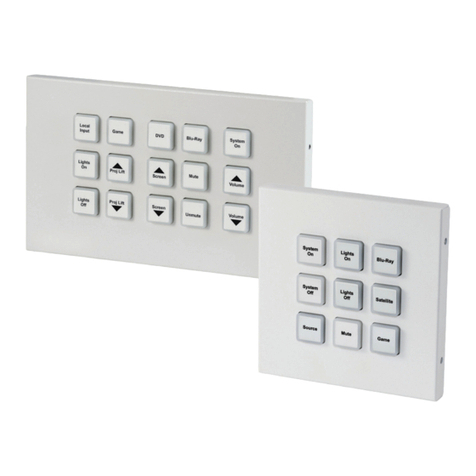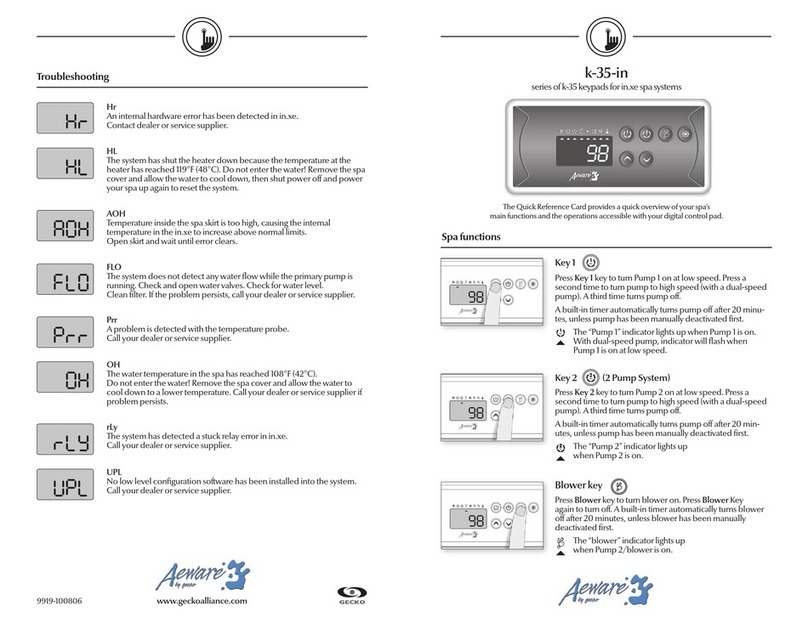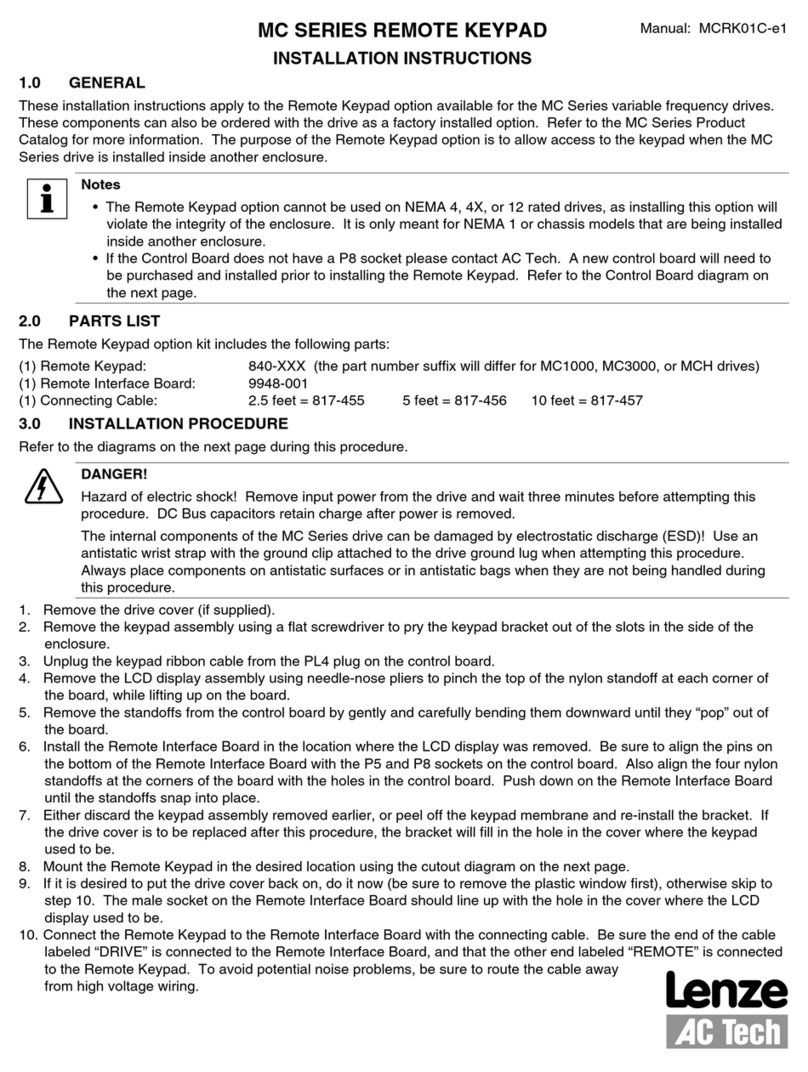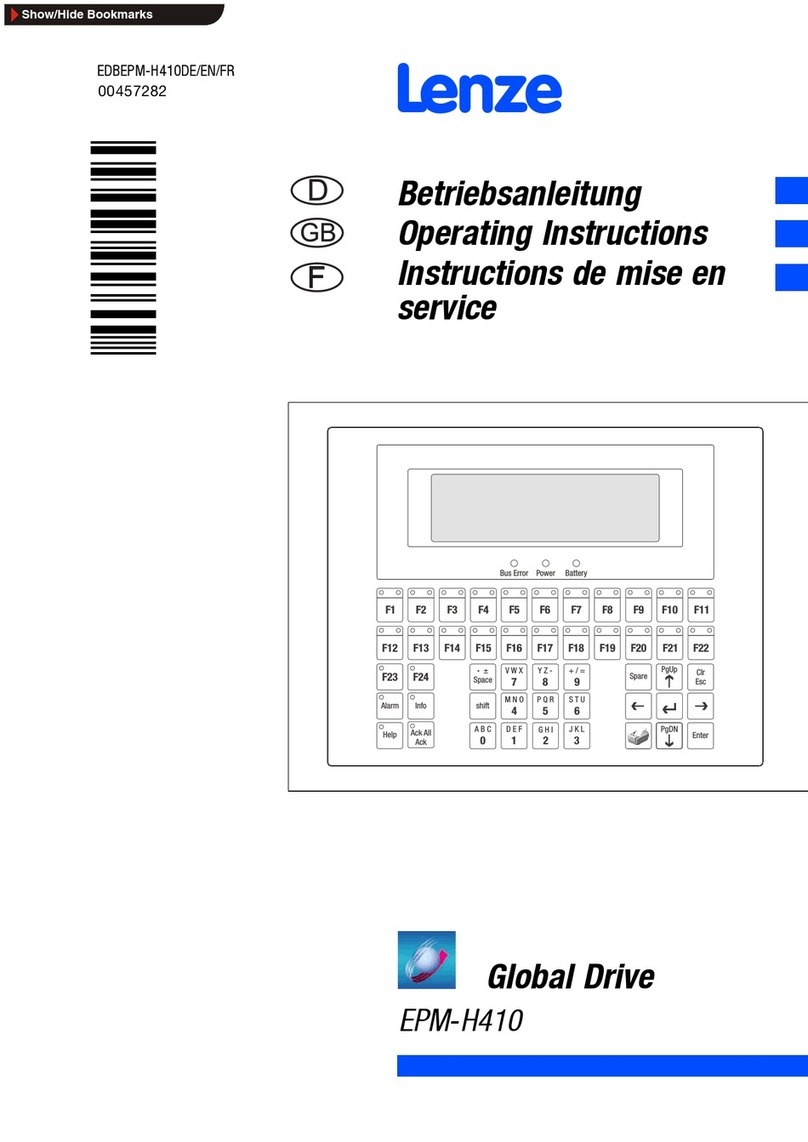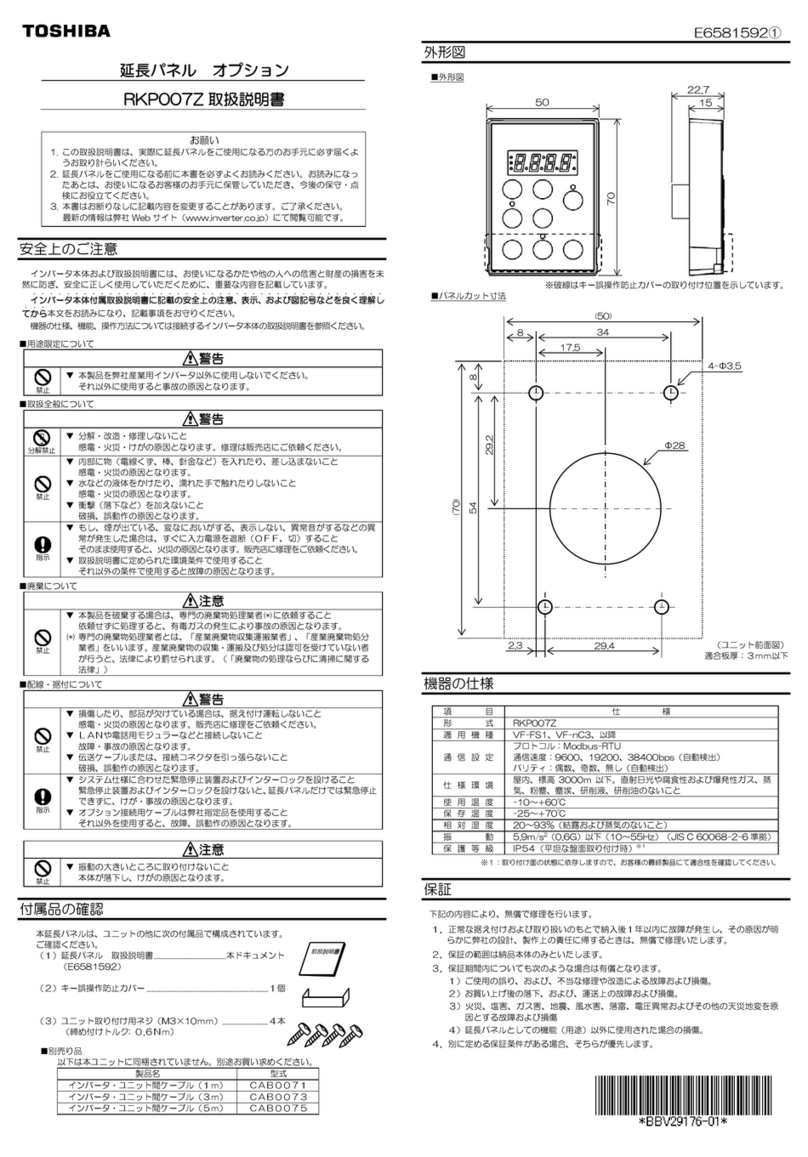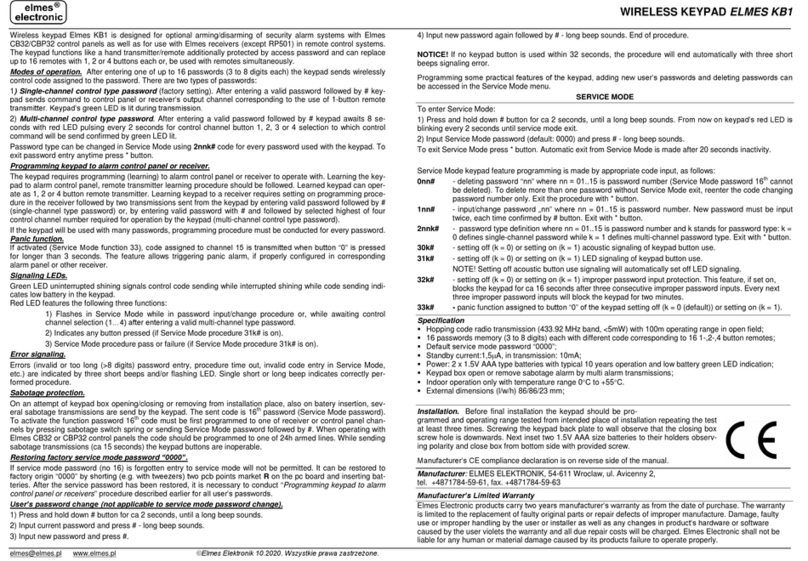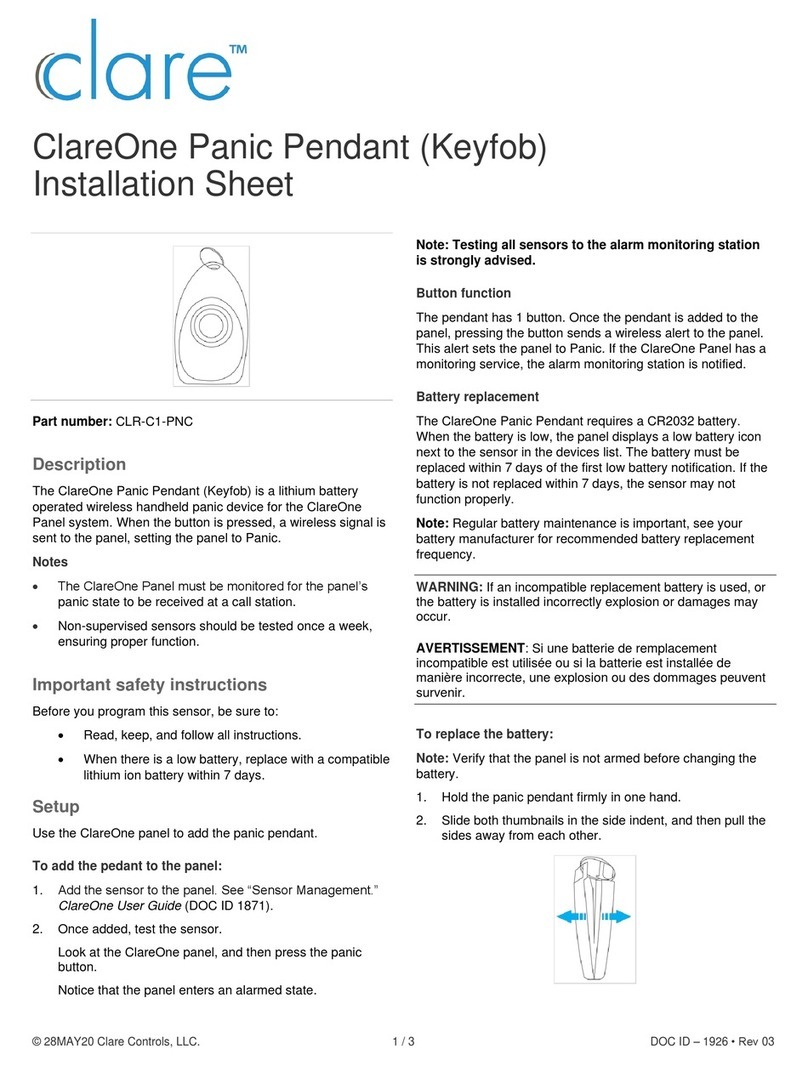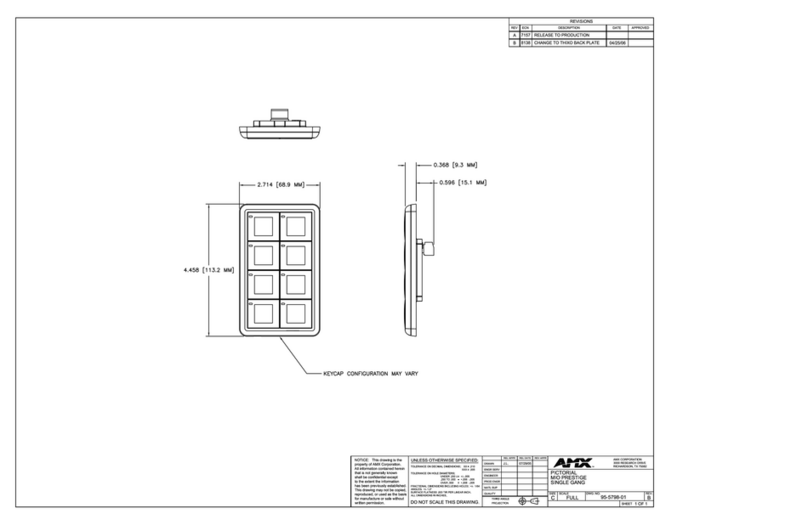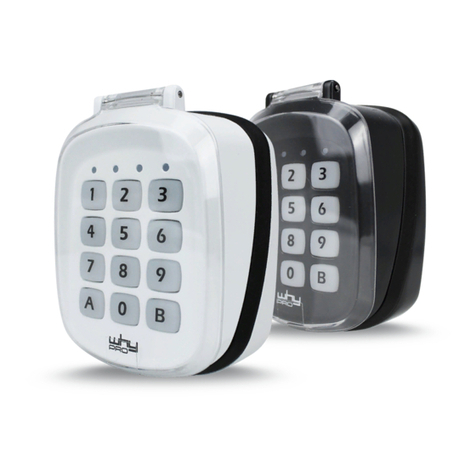
12. ATLAS 8 PLUS LCD - PROGRAMMING 41
12.1 Factory Defaults 41
12.2 Entering Engineer Mode 42
12.3 Setting Volume Control 42
12.4 Resetting The Non-Volatile Memory (NVM) to Factory Settings 42
12.5 Setting The Panel When Mains Fails 42
12.6 Programming Set Modes 43
12.7 Setting the Alarm Bell Time 43
12.8 Setting Entry Time 43
12.9 Setting Exit Time 43
12.10 Changing the Engineer Code 43
12.11 Programming Options 44
12.11.1 Programmable Output1. 44
12.11.2 Programmable Output2. 44
12.11.3 System Option 1 44
12.11.4 System Option 2 44
12.11.5 System Option 3 44
12.11.6 System Option 4 45
12.11.7 Programmable Re-Sets 45
12.11.8 Alarm Receiving Centre Telephone Number 45
12.11.9 Alarm Receiving Centre Second Telephone Number 45
12.11.10 Customer Account Code 1 45
12.11.11 Downloading Access Code 45
12.11.12 Zone Alarm Reporting Codes 45
12.11.13 Zone Tamper Alarm Report Codes 46
12.11.14 System Set / Unset Reporting Codes 46
12.11.15 User Set Reporting Codes 46
12.11.16 User Unset Reporting Codes 47
12.11.17 Maintenance and Priority Codes 47
12.11.18 Restoral Reporting Codes 47
12.11.19 Digicom Codes 47
12.11.20 Keyswitch Set Configuration 48
12.11.21 Group Reporting Telephone Allocation 48
12.11.22 Engineer NVM Reset 48
12.11.23 Follow Select 48
12.11.24 Bell Delay 48
12.11.25 Anti Code First Digit 49
12.11.26 Engineers P.C. Third Telephone Number 49
12.11.27 System Option 5 49
12.11.28 System Option 6 49
12.11.29 System Option 7 49
12.11.30 System Option 8 49
12.11.31 Communicator Test 49
12.11.32 Miscellaneous Reporting Codes 50
12.11.33 System Option 11 50
12.11.34 System Option 12 51
12.11.35 System Option 13 51
12.11.36 System Option 14 51
12.11.37 System Option 15 51
12.11.38 System Option 16 51
12.11.39 System Option 17 51
12.11.40 System Option 18 51
12.11.41 System Option 19 51
12.11.42 System Option 20 52
12.11.43 System Option 21 52
12.11.44 Set A Set Option 52
12.11.45 Set B Set Option 52
12.11.46 Set C Set Option 52
12.11.47 Set D Set Option 52
12.11.48 Final Door 53
12.11.49 Change Text 53
Rins163 Issue 9 Page 5
